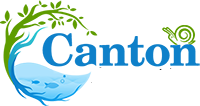.jpg?width=1025&height=683&name=Frogbit%20FA%20(1).jpg)
Elevate your aquarium's aesthetic and ecological balance with groundbreaking aquascaping techniques using Canton Aquatics' floating plants.
Exploring the Benefits of Floating Plants in Aquascaping
Floating plants are not just a decorative addition to your aquarium; they play a crucial role in the ecological balance of your aquatic environment. These plants help regulate water temperature by providing shade, which can be especially beneficial in preventing overheating in direct sunlight. Additionally, they serve as natural filters, absorbing nitrates and toxins that could harm your fish and other aquatic life. The roots of floating plants also provide a unique habitat for beneficial bacteria and can act as a feeding ground for fish fry and invertebrates.
Beyond their practical benefits, floating plants add a dynamic level of beauty to aquascapes. Their gentle movement on the water's surface creates a calming effect and adds visual interest, which can make your aquarium a centerpiece in any room. Canton Aquatics' range of floating plants offers varied textures and colors, allowing aquarists to create a rich tapestry above the waterline that complements submerged plants and hardscape elements.
Selecting the Right Floating Plants for Your Aquarium
Choosing the right floating plants for your aquarium depends on several factors, including lighting, water conditions, and the type of fish you keep. Some species, like Duckweed and Water Lettuce, are known for their rapid growth and can quickly provide coverage, which is ideal for species that prefer low-light environments. Others, such as Red Root Floaters, offer a pop of color with their distinctive red-hued roots.
When selecting floating plants from Canton Aquatics, consider the overall design you aim to achieve. If you're looking for a minimalist approach, opt for plants with smaller leaves and a more restrained growth pattern. For a lush, jungle-like feel, choose species that grow larger and have a tendency to spread. It's important to balance aesthetics with practicality — ensure that your chosen plants will thrive in your specific aquarium conditions.
Design Techniques for Floating Plant Arrangements
Designing with floating plants offers a unique opportunity to create layers and depth in your aquarium. One effective technique is to use floating plants to create natural-looking riverbanks or shorelines. By clustering plants densely in some areas and sparsely in others, you can mimic the ebb and flow of vegetation commonly found in natural water bodies.
Another approach is to use floating plants to frame specific focal points within your aquascape. Strategic placement can draw the eye towards a beautiful piece of driftwood or a particularly vibrant cluster of submerged plants. For those who enjoy a more structured look, floating plants can be corralled into geometric shapes or lines using fishing line or clear dividers, providing a modern twist on the traditional aquascape.
Integrating Floating Plants with Traditional Aquascaping Elements
Integrating floating plants with traditional aquascaping elements requires a thoughtful approach to ensure a harmonious design. When adding floating plants to an aquarium with a well-established hardscape, consider how their shapes and textures will complement rocks and wood. For example, the delicate fronds of Salvinia can soften the appearance of rugged stones, while the broad leaves of Amazon Frogbit can echo the roundness of smooth pebbles.
Submerged plants also play a role in this integration. Tall, stem plants can be planted in the background to provide a seamless transition to the floating plants above, while ground cover species can ensure the lower levels of the aquascape don't feel bare. Remember to account for the shadow cast by floating plants, and choose shade-tolerant species for the areas beneath them.
Maintaining Healthy Floating Plants for a Thriving Aquascape
Maintaining healthy floating plants is essential for a thriving aquascape. Regular pruning will keep growth in check and prevent floating plants from overtaking the water's surface, which could limit light and oxygen for other inhabitants. It's also important to monitor water quality, as excess nutrients can lead to algae growth that may compete with your floating plants.
Feeding your floating plants with appropriate fertilizers will support their growth and vitality. Canton Aquatics offers specialized plant food that can help your floating varieties flourish. Additionally, be mindful of water movement; while some floating plants can tolerate a gentle current, others may prefer still water. Adjust your filtration output accordingly to create the ideal environment for your chosen species.
Additional Resources:
All About Floating Aquarium Plants
Red Root Floaters: A Care Guide
Aquarium Floater Plants




Leave a Comment